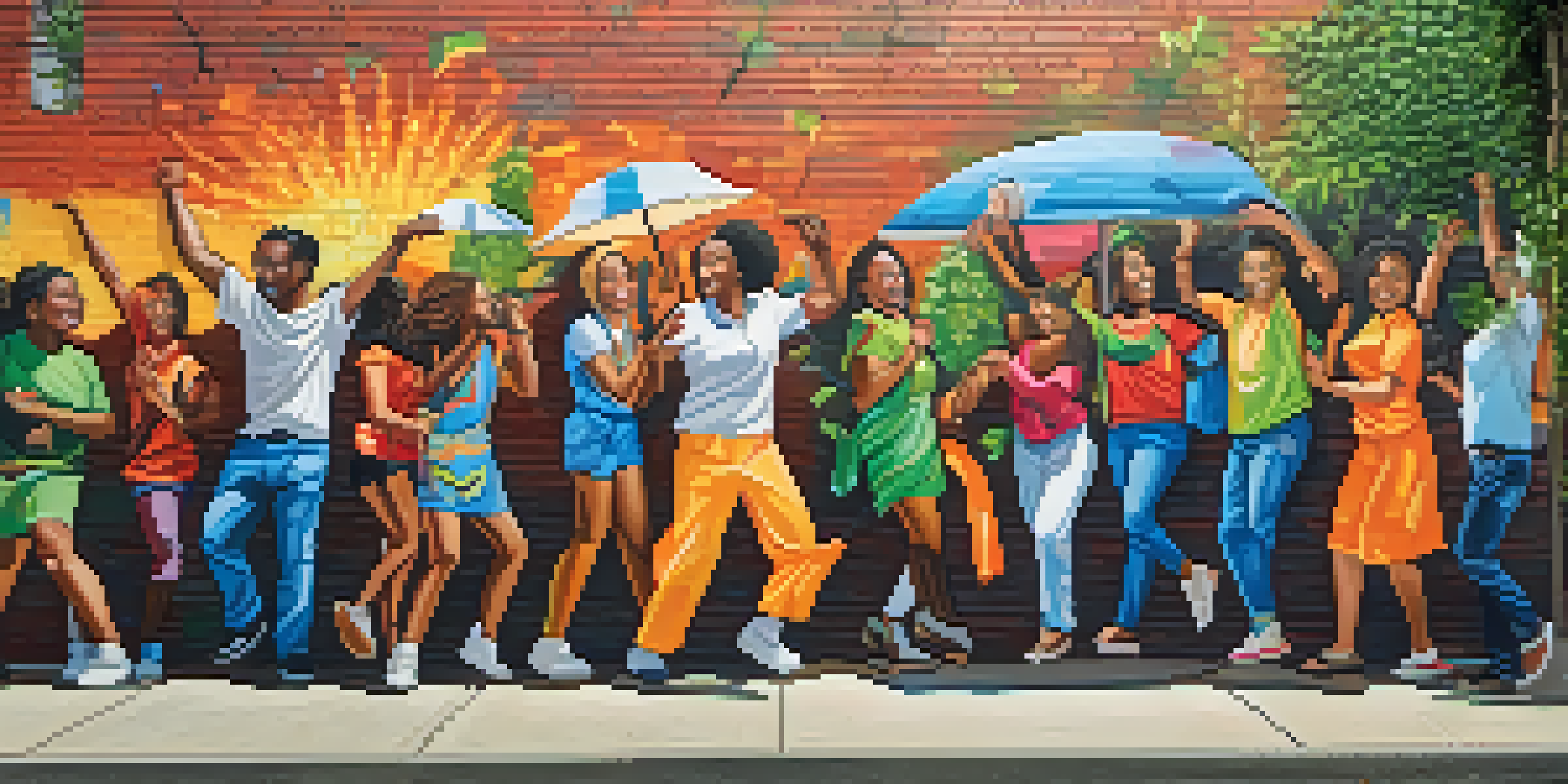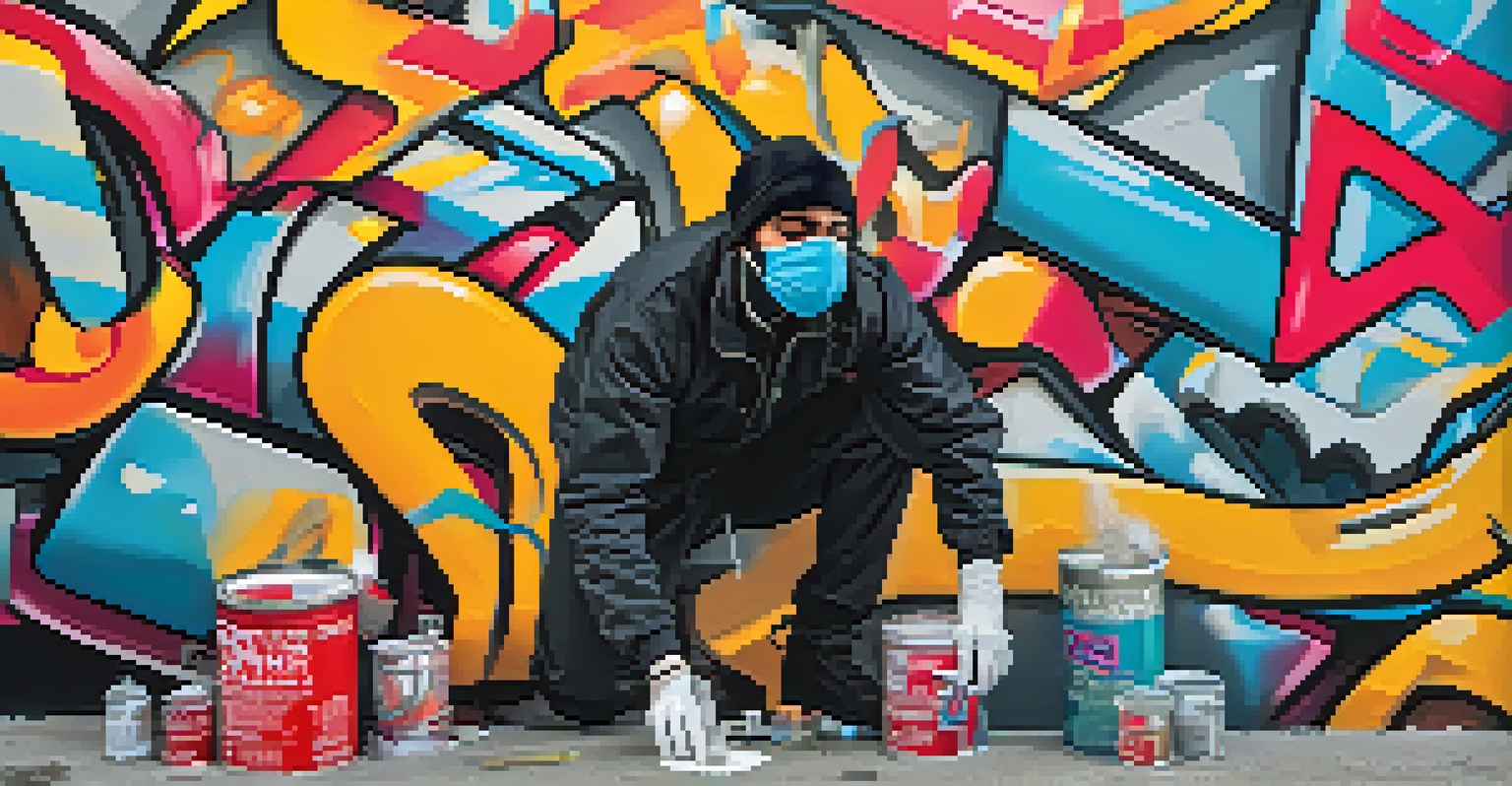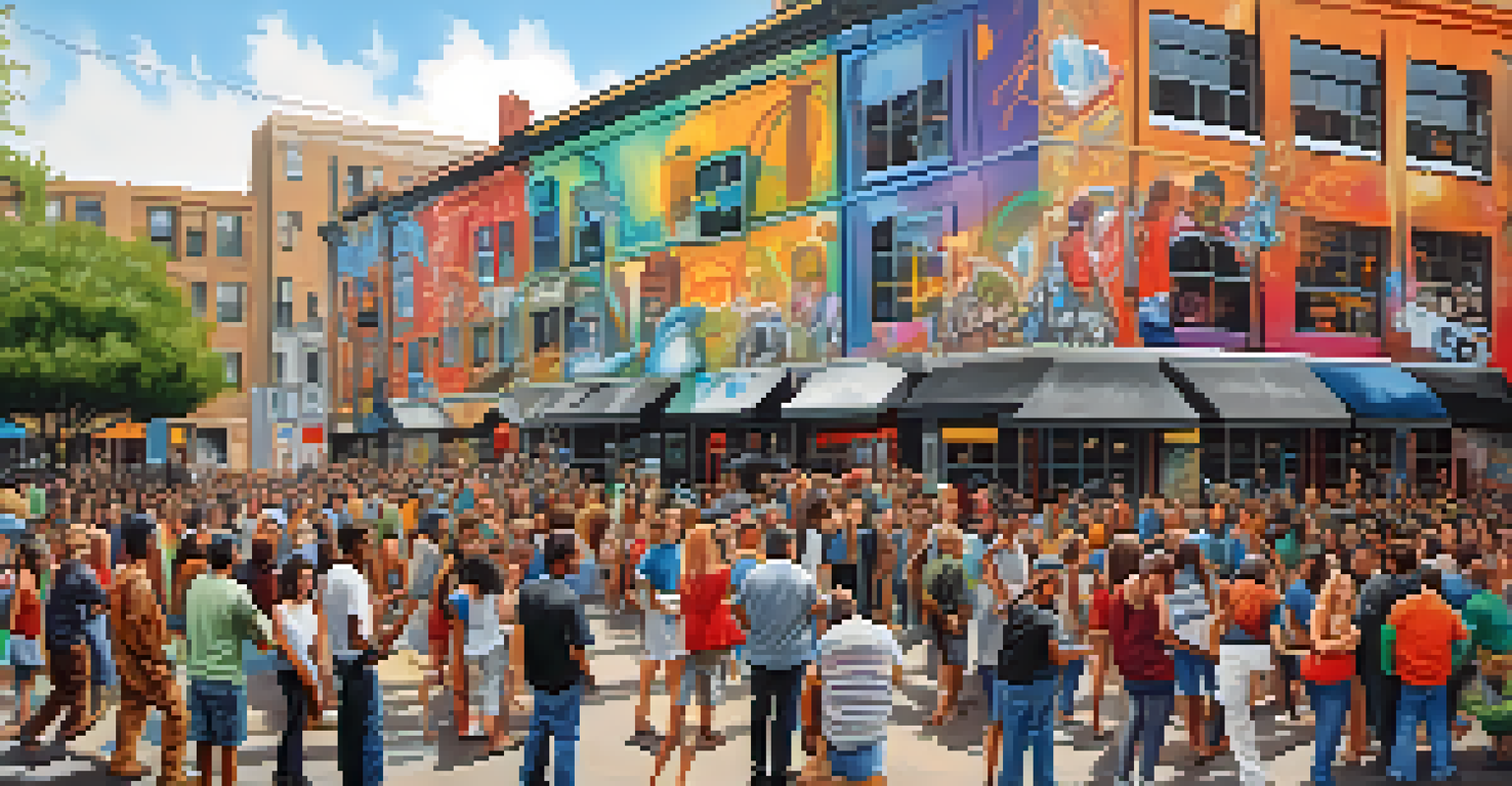Street Art and Graffiti: Can They Coexist in Urban Spaces?

Defining Street Art and Graffiti: What Sets Them Apart?
Street art and graffiti are often used interchangeably, but they have distinct characteristics. Street art typically refers to artworks created in public spaces, often with permission, while graffiti usually involves unauthorized writing or symbols. This difference is crucial as it shapes how each is perceived by the public and authorities alike.
Art is what you can get away with.
For example, street artists like Banksy have gained international acclaim for their thought-provoking pieces that often carry social messages. In contrast, graffiti is frequently associated with vandalism, even if it showcases incredible talent. Understanding these nuances helps clarify the ongoing debate about their coexistence.
Ultimately, the distinction between street art and graffiti influences how we appreciate and critique these forms of expression. Recognizing their unique qualities allows us to engage with both on their own terms, fostering a more balanced conversation about their roles in urban environments.
The Cultural Significance of Urban Art Forms
Both street art and graffiti hold immense cultural significance, serving as voices for marginalized communities. These art forms often address social issues, political struggles, or community pride, making them powerful tools for expression. They can transform bland cityscapes into vibrant canvases that reflect the diverse narratives of urban life.

Consider the murals that celebrate local history or the graffiti that critiques social injustice. These artworks invite dialogue and provoke thought, often encouraging viewers to reflect on their surroundings and the messages conveyed. In this way, they contribute to a deeper understanding of the communities they inhabit.
Street Art vs. Graffiti Defined
Understanding the key differences between street art and graffiti helps clarify public perceptions and encourages appreciation for both forms.
As urban environments evolve, the cultural importance of these art forms only grows. They challenge the status quo and invite us to consider our relationship with public spaces and the stories they tell, making them essential components of urban identity.
Legal Perspectives: The Battle for Public Spaces
The legal landscape surrounding street art and graffiti is complex and varies by location. In many cities, graffiti is deemed illegal, leading to fines or removal, while street art can sometimes receive official sanction. This legal dichotomy creates tension between artists and city officials, as both forms vie for space in urban areas.
Graffiti is one of the few tools you have if you have almost nothing.
For instance, some cities have implemented designated areas for legal graffiti, allowing artists to showcase their work without the fear of repercussions. This approach can foster creativity and community engagement while reducing conflicts over unauthorized art. However, it raises questions about ownership and the authenticity of art created in sanctioned spaces.
Navigating these legal frameworks is essential for artists who wish to express themselves without facing legal challenges. Finding common ground between the two forms can lead to new opportunities and collaborative projects that enhance urban landscapes.
Public Perception: The Fine Line Between Art and Vandalism
Public opinion on street art and graffiti often hinges on personal experiences and cultural values. Some see graffiti as a form of vandalism, while others view it as an art form that enriches urban life. This divide can lead to heated debates about the appropriateness of such expressions in public spaces.
For example, a vibrant mural may be celebrated, while a tag on the same wall could be viewed as an eyesore. This inconsistency in perception highlights the subjective nature of art and the various factors that influence our judgments. Understanding this dynamic is crucial for fostering a more inclusive dialogue about public art.
Cultural Significance of Urban Art
Both street art and graffiti serve as vital expressions of community identity and social issues, enriching urban environments with their narratives.
Ultimately, shifting perceptions can lead to greater acceptance of both street art and graffiti as vital components of urban culture. By recognizing their value, we can work towards a more harmonious coexistence of these two forms of expression.
Collaboration Opportunities: Street Art Meets Graffiti
Despite their differences, there are numerous opportunities for collaboration between street artists and graffiti writers. Joint projects can blend the distinct styles and messages of each form, creating unique artworks that resonate with a broader audience. These collaborations can help break down barriers and promote mutual respect between artists.
For instance, community murals that incorporate both street art and graffiti can tell rich stories about the neighborhood, fostering a sense of unity. These partnerships not only enhance the visual appeal of urban spaces but also encourage dialogue among artists and the communities they serve.
Embracing collaboration can pave the way for innovative projects that celebrate the strengths of both forms. By working together, artists can create captivating pieces that honor their individual methods while contributing to a shared vision of urban art.
The Role of Technology in Urban Art Evolution
Technology has played a significant role in the evolution of street art and graffiti, impacting how artists create and share their work. Digital tools and social media platforms have expanded the reach of urban art, allowing artists to showcase their pieces to a global audience. This accessibility has fostered a greater appreciation for the art forms and their creators.
For example, artists can now use digital design software to plan their pieces before executing them on walls. This approach can lead to more intricate designs and thoughtful compositions, bridging the gap between traditional and contemporary techniques. Additionally, social media helps artists connect with like-minded individuals, creating a sense of community.
Collaboration Enhances Urban Art
Joint projects between street artists and graffiti writers can create unique artworks that promote unity and respect within communities.
As technology continues to advance, the landscape of street art and graffiti will likely evolve further. Embracing these changes can lead to exciting developments in style, technique, and collaboration, enriching the urban art scene.
Finding Common Ground: Urban Art as a Unifying Force
At their core, both street art and graffiti share a common goal: to communicate and connect with people. By acknowledging their similarities, we can foster a sense of unity in urban spaces. This shared purpose encourages collaboration and dialogue, paving the way for a more inclusive art scene.
For example, community events that celebrate both street art and graffiti can bring together artists, residents, and city officials. These gatherings can facilitate discussions about the role of art in public spaces, helping to break down stereotypes and misconceptions. Ultimately, such initiatives can promote understanding and appreciation for both forms.

Finding common ground between street art and graffiti not only enriches urban culture but also enhances the overall experience of city life. By embracing these art forms, we can create vibrant, dynamic spaces that reflect the diverse voices of the communities they represent.